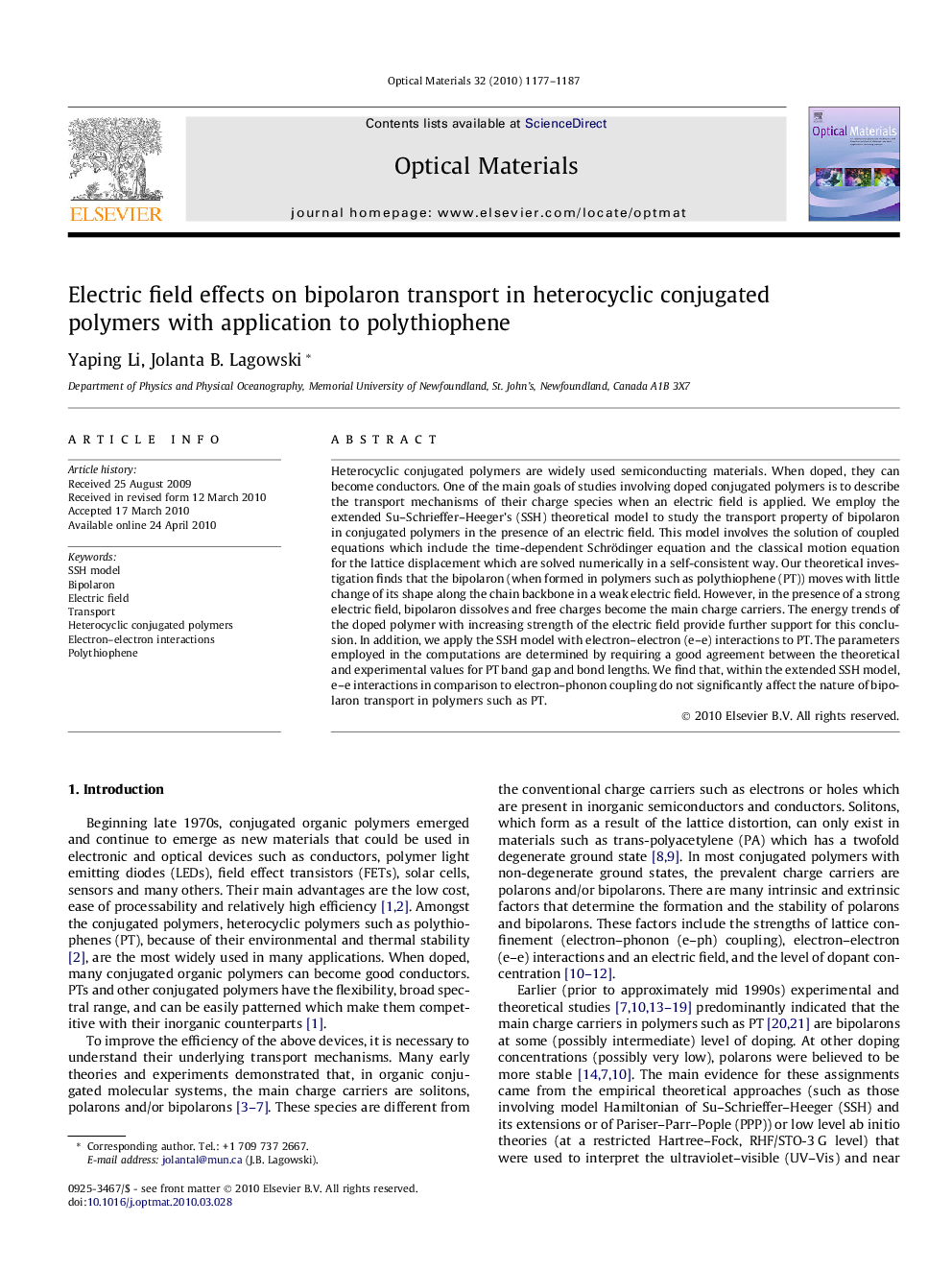| کد مقاله | کد نشریه | سال انتشار | مقاله انگلیسی | نسخه تمام متن |
|---|---|---|---|---|
| 1495550 | 992937 | 2010 | 11 صفحه PDF | دانلود رایگان |

Heterocyclic conjugated polymers are widely used semiconducting materials. When doped, they can become conductors. One of the main goals of studies involving doped conjugated polymers is to describe the transport mechanisms of their charge species when an electric field is applied. We employ the extended Su–Schrieffer–Heeger’s (SSH) theoretical model to study the transport property of bipolaron in conjugated polymers in the presence of an electric field. This model involves the solution of coupled equations which include the time-dependent Schrödinger equation and the classical motion equation for the lattice displacement which are solved numerically in a self-consistent way. Our theoretical investigation finds that the bipolaron (when formed in polymers such as polythiophene (PT)) moves with little change of its shape along the chain backbone in a weak electric field. However, in the presence of a strong electric field, bipolaron dissolves and free charges become the main charge carriers. The energy trends of the doped polymer with increasing strength of the electric field provide further support for this conclusion. In addition, we apply the SSH model with electron–electron (e–e) interactions to PT. The parameters employed in the computations are determined by requiring a good agreement between the theoretical and experimental values for PT band gap and bond lengths. We find that, within the extended SSH model, e–e interactions in comparison to electron–phonon coupling do not significantly affect the nature of bipolaron transport in polymers such as PT.
Journal: Optical Materials - Volume 32, Issue 9, July 2010, Pages 1177–1187